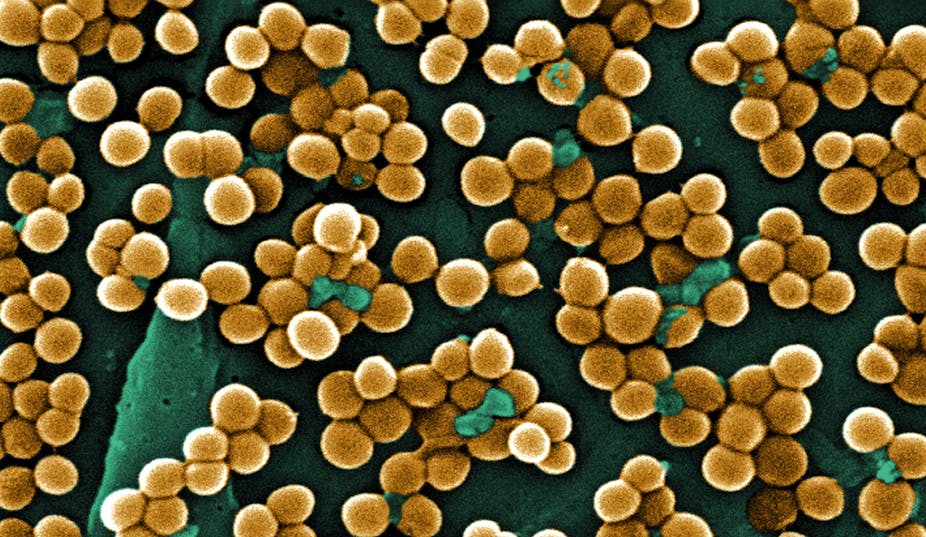Antibiotics have probably saved more lives than any other form of medication. Prior to their development, things that we now consider trivial, such as a prick from a rose bush or a sore throat, could easily become life-threatening conditions.
These harmful microbes that we aim to kill are not helpless against the chemical attacks we subject them to. They can quickly evolve to defend by either breaking antibiotics down, pumping chemicals out of harm’s way, or simply changing the part of themselves that antibiotics target. Whatever the strategy, the result is the same. Microbes develop resistance and antibiotics stop working.
So we are locked in an arms race with harmful microbes, in particular bacteria. We invent a chemical to attack them and they come up with a new form of defence. Sally Davies, England’s chief medical officer, has warned that growing antibiotic resistance threatens throw us back into the 19th century in terms of our ability to fight bacteria.
Caught in the mould
We need a different way to kill bacteria, one where they are unable to learn to defend themselves. Vesselin Paunov, my colleague at the University of Hull, might have developed such a method. His idea is to target something that is unique to each species of microbe, but does not change much from generation to generation — their size and shape.
Paunov’s method involves using small gold particles that recognise and trap microbes of a desired shape, followed by the use of lasers to kill them. As he and his team report in the Journal of the American Chemical Society, they tested this idea on a ball-shaped microbe, Saccharomyces cerevisiae, which is also the yeast used in making bread.
First nano-sized (billionths of a metre) particles of gold and silica are deposited on the surface of the ball-shaped cells, just like wrapping an object in modelling clay. Once the deposited particles acquire the shape of the captured microbe, these newly-formed shells are broken and the trapped microbe removed. If the broken fragments are then let loose in a solution containing the same microbe, they are able to recognise the same-shaped cell and bind to its outer wall, in effect trapping the microbe.
Heat exhaustion
Once all microbes are trapped, lasers are deployed to deliver the killer blow. Only trapped microbes absorb the laser’s energy and get roasted to death.
To ensure that lasers only kill the bacteria trapped in gold shells, Paunov’s team performed the same experiment but with rod-shaped bacteria added to the mixture. The result was the same. The yeast got trapped in gold shells and were killed, while the rod-shaped bacteria were not recognised by shell fragments and remained unharmed.
This selectivity for shapes allows us to find and kill only the harmful microbes. But there is a problem. It is not practical to use lasers to treat a sore throat or a stomach bug. The challenge is to find a way of embedding nanoparticles that form the shells with a toxic payload.
Silver may be the answer. Nano-sized particles of silver have been shown to kill harmful bacteria such as antibiotic resistant Escherichia coli, Staphylococcus aureus, Pseudomonas aeruginosa and others.
If Paunov somehow includes silver in these microbe-trapping shells, we have a neat weapon at hand in the war against superbugs.

